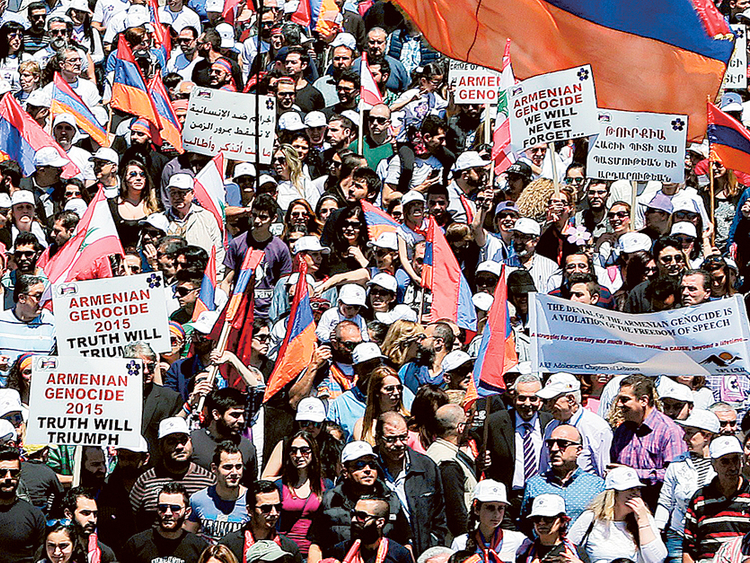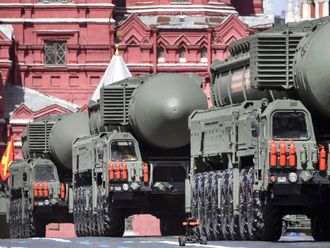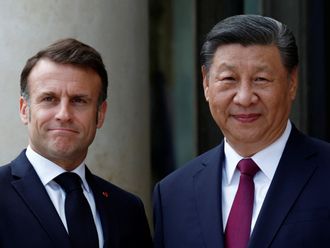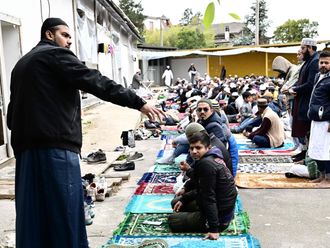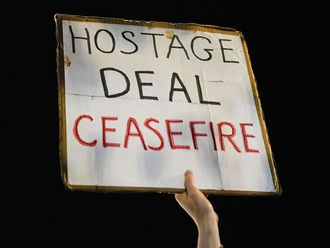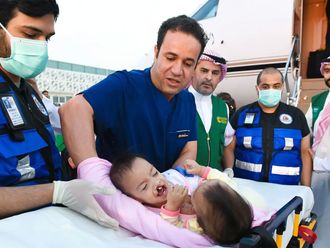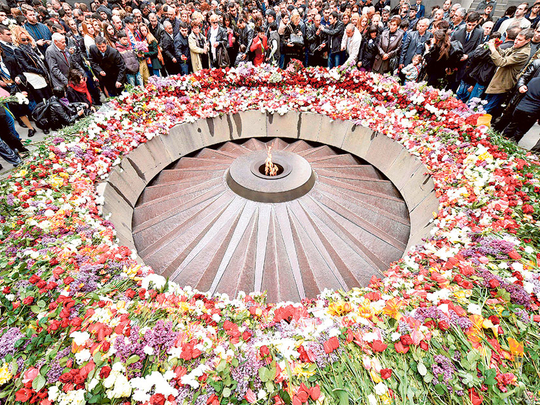
Yerevan: Notwithstanding the American president’s skills in linguistic gymnastics that once again resulted in a failure to rise to the occasion and call the Armenian massacres by their globally acknowledged name, the Armenian Genocide, the world gathered today in Yerevan to commemorate the massacre. And leading officials gathered in a moment of silence at the memorial overlooking the city.
At least a million Armenians marched in silence under cloudy skies to remember 1.5 million who perished starting in 1915 in their native homeland. Ruled by Ottoman Sultans, the nation was nearly annihilated, even if hundreds of new homelands rose from the ashes of the victims, including two dozen in the Arab World, where survivors were received with open arms and rebuilt their destroyed legacies. Turkey, which denied that it was a genocide, was one of those nations, too, although a century after the tragic events, Ankara struggled with its own history.
In a moving ceremony that preceded the official launch, ambassadors and other officials accredited to Armenia moved along the open air corridor in front of the memorial to depose a single rose on a collective wreath to declare that the world was with Armenia. The first official who arrived was the Kuwaiti diplomat, who shook hands with the head of state and the First Lady, and then was escorted by a young person towards a especially-built podium for guests. Then came the Kazakh, Indian, Japanese, Finish Danish, Slovak, Brazilian, British, Iraqi, Iranian, Emirati, Chinese, American, and the Uruguayan (the first country to have formally recognised the Genocide back in 1965), and many others, all of whom, one after the other, for nearly an hour and a half, added their voices to the simple yet truly meaningful gathering.
Then came the Presidents of Cyprus, Nicos Anastasiades, and Serbia, Tomislav Nikolic, as well as two leaders whose countries held permanent seats at the UN Security Council and who enjoyed veto power, Francois Hollande of France and Vladimir Putin of Russia. Armenians were glued to their television sets as they watched these men and women march in a solemn procession that carried a deeply moving message — that the world was in Yerevan to share a moment of truth. President Serzh Sargsyan and his wife then closed this part of the ceremony by adding the last flower on the wreath that was then carried in front of the memorial as a bell rang followed by the national hymn.
The Armenian head of state delivered his address, in which he linked, once again, the reason why the world ought to remember the Armenian massacre, so that fresh ones are not committed. He recalled the powerful April 12 address by Pope Francis who removed lingering doubts even if challenged politicians toyed with the definition that Raphael Lemkin advanced back in 1944.
Sargsyan thanked the four foreign presidents who decided to attend the commemoration, and thanked Istanbul’s Taksim Square demonstrators who wished to add their voices by standing up to their government’s diktat, hammering in that “nothing can be forgotten and that 100 years later we remember and demand that justice be served ... We have a lot to give the world and we will,” said the president.
Brief musical interludes saw a famous Soprano diva, followed by a sensational young durum player, as well as religious choirs deliver several prayers for the eternal rest of the victims.
Cyprus’ President Anastasiades’ address stressed why the island-state stood in solidarity with Armenia and was grateful for all survivors who settled in his country, and became useful members of Cypriot society.
“Your call,” he told his Armenian counterpart, “to incorporate attention to genocides in political deliberations was a commendable step, which we support.”
Then Nikolic took to the podium and declared “we, too, stand with Armenians, because your demands are just.” Hollande added his voice to the chorus saying to his “Armenian friends that France will never forget.” “Although the Ottomans tried to destroy you, you are here, alive, thriving,” he said, “and while your intellectuals were massacred on April 24, 1915, your nation created worthy replacements.”
He recalled how many survivors settled in France with little more than their intellectual skills and succeeded, identifying the singer Charles Aznavour, who was sitting in the front row, as an example.
Hollande did not engage in linguistic gymnastics. He used the word “genocide” and reminded his audiences that French law was clear, that there can only be one truth, and that the 2001 Law that the French Parliament passed did not skirt around the subject. Paris, stressed Hollande, is aware of other genocides, in Cambodia, Rwanda and elsewhere, and now in the Middle East where extremists are trying to exterminate minorities, which he identified as “barbarities that France cannot accept.”
“We cannot accept the disappearance of minorities,” affirmed the French President, because “they are the wealth of the Middle East and we must protect them.” “We remember the Armenian Genocide so that mankind does not repeat this horror ever again,” he concluded, and “We will never forget, because the 100th commemoration is a call for peace and we must build on the key words that are being used in Turkey so that the two nations can reconcile. We must stand by those who want to fight extremists inside Turkey so that the blood shed by the Armenian journalist Hrant Dink [who was murdered by a young Turkish man in January 2007] would not be in vain. We want peace for Armenia.”
Putin was equally eloquent as he stressed that Russia stood with Armenia because it’s quest for recognition is just. He recalled that nearly three million Armenians toiled in Russia, adding value to the country, something which he appreciated, as he called on the rest of the world to join them in this commemoration.
Tsitsernakaberd, the massacre memorial complex, was built in 1967 and incorporates a 44-metre stele, which symbolises the national rebirth of Armenians. Twelve slabs are positioned in a circle, representing the 12 lost provinces in present day Turkey. In the centre of the circle, at a depth of 1.5 metres, is a flame that flickers under cloudy skies.


